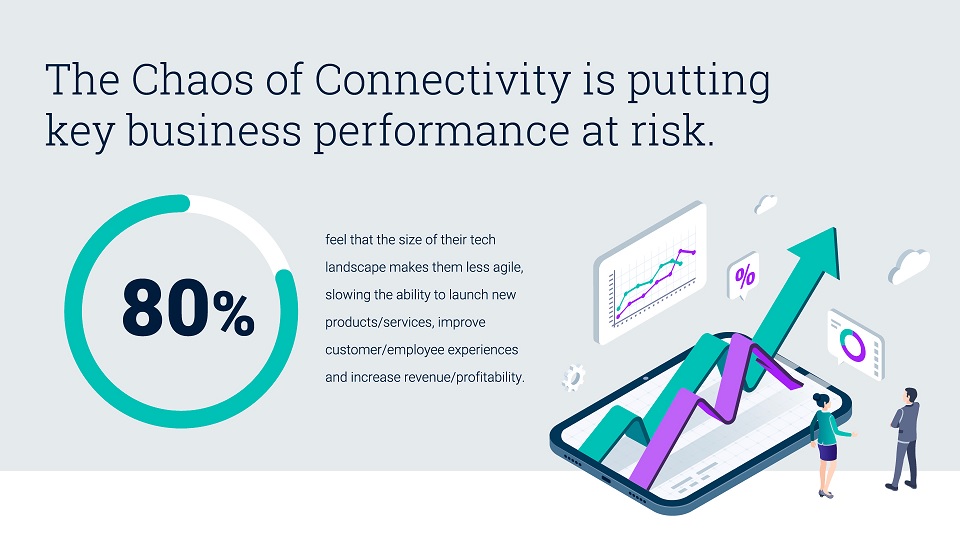A vast majority (89%) of organizations have rapidly expanded their technology in the past few years and three quarters (76%) say it's brought with it increased "chaos" that they have to manage, according to Situation Report 2024: Managing Technology Chaos from Software AG.
This makes governance efforts more complex, organizations less agile and can harm core activities including service delivery and productivity.

Source: Software AG
Dr Stefan Sigg, Chief Product Officer at Software AG, said, "The complexity that organizations face in today's world of disruption, risk and rapid technology change is greater than ever. It's difficult to get a grip on all of this and be a successful organization. We see our customers overcoming these challenges by finding the right tools to manage this technology related disorder. What those tools are depends on how the challenges manifest — but there is an answer out there. And for those that find it, they can become more competitive, more efficient, and more resilient."
The three types of chaos identified as part of this research are:
■ Operational Chaos — where a maze of different processes and systems slow down, duplicate or disrupt day-to-day operations. Overcoming these operational barriers allows organizations to be more competitive, better controlled and more agile. Operational resilience is the prize for organizations that can manage operational chaos.
■ Chaos of Connectivity — where the expansion of systems is done without a plan to properly connect them together. Overcoming this lack of connectivity allows organizations to become more productive, agile, and better governed.
■ IT Chaos — where the multiplication of different systems is not done in a coordinated way and technology sprawls uncontrolled and unmanaged. Overcoming this IT threat enables organizations to control costs, plan future development and increase operational resilience.
Sigg continued, "Finding the right tools to manage the portfolio is key. But we should not be just talking about managing. These technology investments are being made as part of a transformation agenda. Organizations are aiming to differentiate themselves, be innovative and grow. Technology is a critical enabler for most of those plans. Greater transparency and control over the technology landscape will better align the tech and business agendas and set these companies up for success."
Impact of expansion
■ 69% of organizations have a higher number of disparate applications/systems compared to 2 years ago.
■ 71% say that number will be higher in two years' time.
■ 70% of companies have accrued more Technical Debt in the last year.
■ Managing legacy and new systems together is increasingly complex for 44%.
Agility issues
■ 80% say the size of technology infrastructure makes it harder to be agile and/or productive.
■ The same number (80%) feel complex tech makes them slow to launch new products/services, improve experiences for customers and employees and increase revenue/profitability.
Governance issues
■ 65% feel that tech complexity makes governance issues worse.
■ 46% say difficulty moving data out of legacy systems slows down decision making.
■ 81% say that a major pain point is not having a clear view/management of all systems.
Operational issues
■ 45% say duplicate process that cause internal conflict slows down action.
■ IT and LoB are in conflict about deploying new apps in 80% of organizations.
■ 82% of organizations say Shadow IT is a problem.
Methodology: The research was conducted in November 2023, across the USA, UK and Germany.
